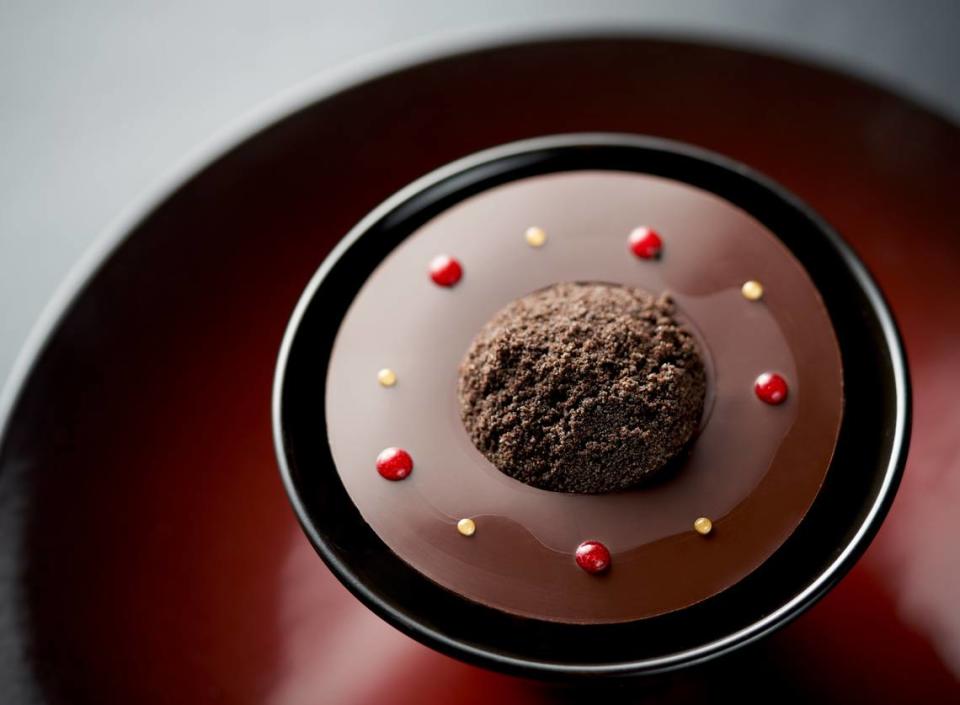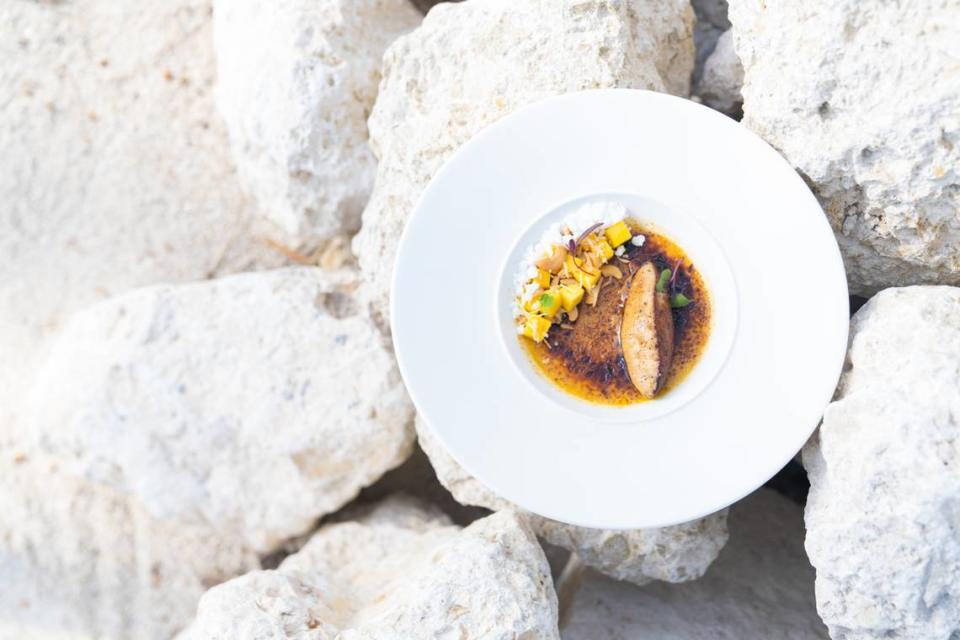6 local dishes created with equal amounts of flavor and artistic flair
Food, like art. can stimulate our senses. While paintings, sculptures, and music appeal to sight and sound, food (when created in its highest quality form) has the power to appeal to all five senses simultaneously. A dish can be visually stunning, smell delicious, feel both familiar and tempting in our hands, sound surprisingly comforting in every crackling bite, all before the final sense kicks in — taste. Some of our favorite Miami restaurants have painted a different picture of what a fine menu should be, adding dishes that not only provoke our most basic sensibilities but also leave us inspired by their masterful style and presentation.
THE SURF CLUB RESTAURANT
Michelin-starred chef Thomas Keller graced our city two years ago opening his first Florida spot at one of Miami’s most storied and historic venues, the newly reopened The Surf Club. Re-imagining a bygone era of the famed property’s glamorous past, Keller transported himself to 1930 and The Surf Club’s lavish black-tie Gatsby-esque heyday where Hollywood celebrities frequented the exclusive private club and Winston Churchill spent time there sipping on Old Fashioned cocktails and painting seascapes (a cigar likely in hand). Keller’s Hass Avocado and Vegetable Louie (a dish served at Vanity Fair’s swank Oscar Party celebrating the 89th Academy Awards) is an immaculate composition of an unblemished Hass avocado half decorated with an array of colorful fresh garden vegetables and an ultra-fancy pink Russian dressing — a true original in taste and design. surfclubrestaurant.com.
L’ATELIER DE JOËL ROBUCHON

When I think of culinary master Joël Robuchon, unrestricted artistry comes to mind. The kind that is intrinsically beautiful to behold. And unlike a piece of art hanging in a museum, this is the edible kind and acceptable to devour. L’Atelier’s executive pastry chef Salvatore Martone preserves Chef Robuchon’s recipe and skill in the Miami Design District’s location’s most famous dessert, The Chocolate Sensation, a play off of traditional milk and cookies. A round scoop of white chocolate ice cream is dusted with Oreo cookies and placed on top of a seductive, silky crémeux made with of Valrhona Guanaja chocolate. A dark chocolate orb sits on the Oreo dusted ice cream globe, surrounded by planet- like dots of raspberry and mango gels. A deliciously sweet feast for the eyes and mouth. latelier-miami.com.
LA MAR BY GASTÓN ACURIO

Not your usual potato dish, La Flor de Papa (literally translated to “the potato flower”) is a playful creation by La Mar’s chef Diego Oka, who was inspired by the folkloric Andean attire rooted in the brightly colored flowers found in Peru, as well as Huayno, a genre of popular Andean music that pays homage to the region’s popular dish, La Flor de Papa. A typical Peruvian causa (potato purée) is tinted pink with red beet juice and artfully plated around sweet and salty blue crab and creamy Huancaina sauce. This tasty canvas is dotted with smoked trout roe and avocado cream, while edible flowers and green leaves round up the creation, which remind us of Jeff Koons’ “Puppy” — the dog flower sculpture sitting at the entrance of the Guggenheim museum in Bilbao, Spain. mandarinoriental.com.
MILA RESTAURANT, ROOFTOP LOUNGE AND MIXOLOGY BAR

MILA’s founder Gregory Galy was born in Mougin, a southern French village famous for its great rustic beauty and its incredible regional food. In MILA’s cuisine, Galy and his culinary team fuse those elements that surrounded Galy in childhood together with touches found in Japanese culture for diverse and flavorful results. The restaurant’s scallop crudo can be compared to Claude Monet’s paintings of water lilies found at the farmhouse in Giverny where the artist lived. Masses of flowers reflect the aquatic light, resembling the delicate slices of scallops floating on a pond of yuzu ponzu, olive oil, truffle butter, and colorful shiso found at the rooftop Miami restaurant. milarestaurant.com.
LITTLE PALM ISLAND

Chef Daniel Ganem Instagram page is like an artist’s catalog of equally colorful and delectable dishes. Catering to a high-end clientele at the dining room at Little Palm Island, Ganem expertly combines luxurious ingredients with those indigenous to the subtropical island setting. In the case of his curiously flavored Foie Gras Crème Brûlée, it was about bringing together the unexpected. “I wanted to have something creamy, with vanilla-flavored custard and a bit of foie grass, in addition to a seared foie,” he says, “but also wanted to add more island flavors.” Ripe diced mango, toasted cashews, coconut and coconut powder resembling the foam of the waves breaking on the beach did the trick. littlepalmisland.com.
LEKU MIAMI
Being the executive chef at Leku, the restaurant located at the lauded and still relatively new Rubell Museum, home of one of the leading collections of contemporary art in America, wasn’t an easy task. But 31-year-old Mikel Goikolea has the Basque pedigree to come up with dishes aesthetically pleasing enough to stand next to the impressive artwork that fills the 40-odd galleries in the Allapattah space, including former artist-in- residence Allison Zuckerman’s 60-foot mural centerpiece hanging inside the restaurant. It helps to grow up in the region with most Michelin Stars per capita in the world. Goikolea’s richly toned beet tartar is meticulously diced and balanced with a basil emulsion, crisp capers, caviar, flowers and a savory, web-like addition of butter. lekumiami.com.

